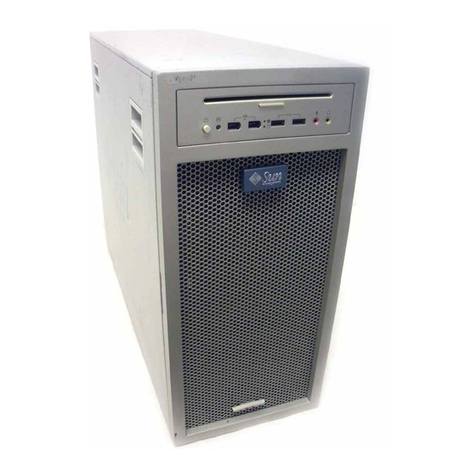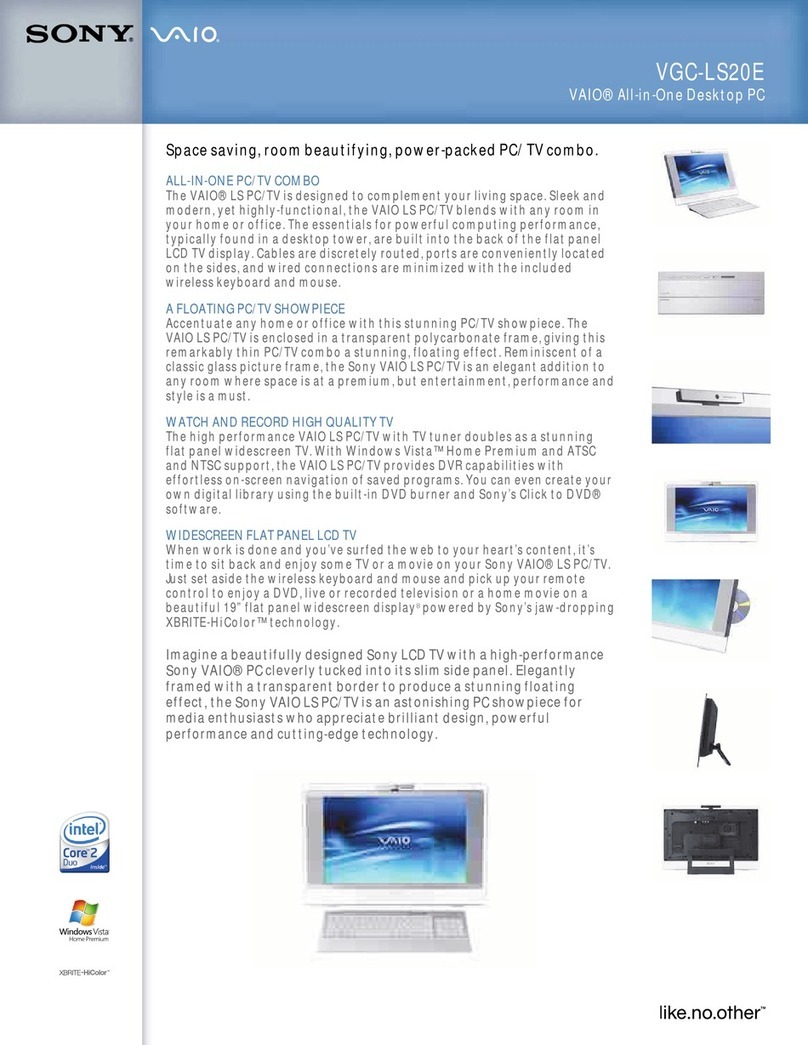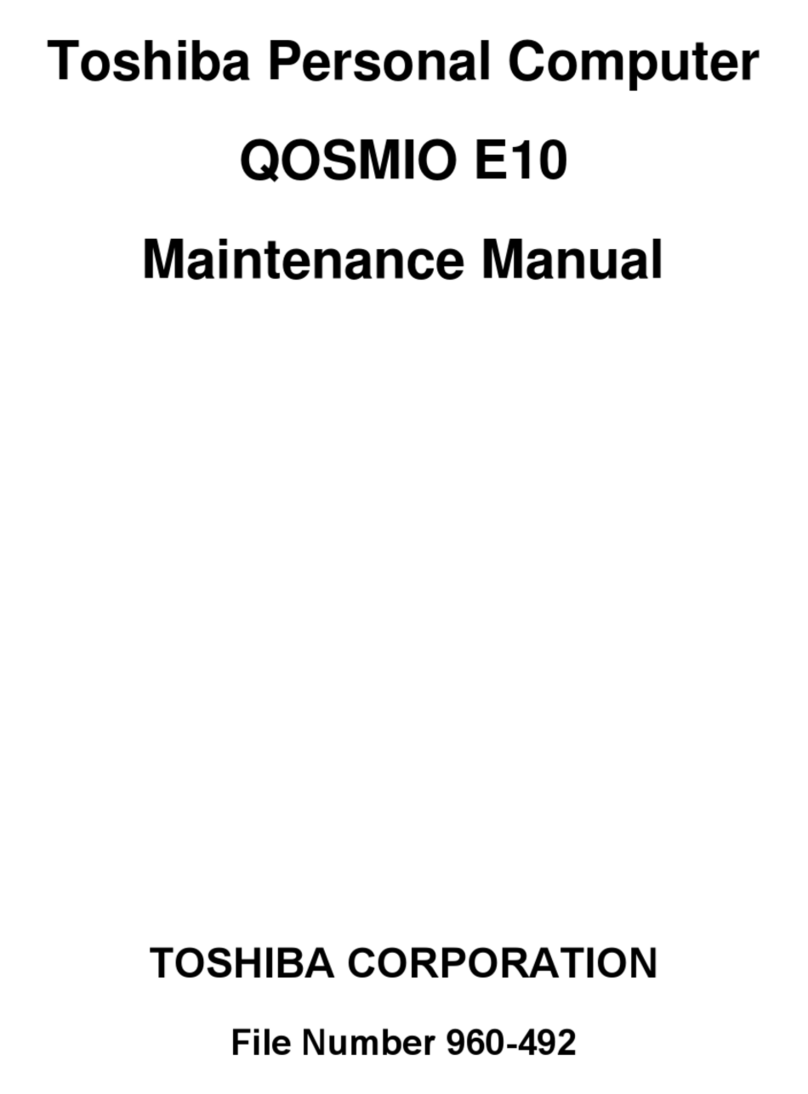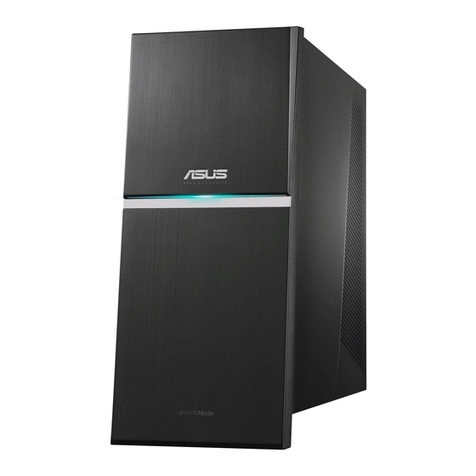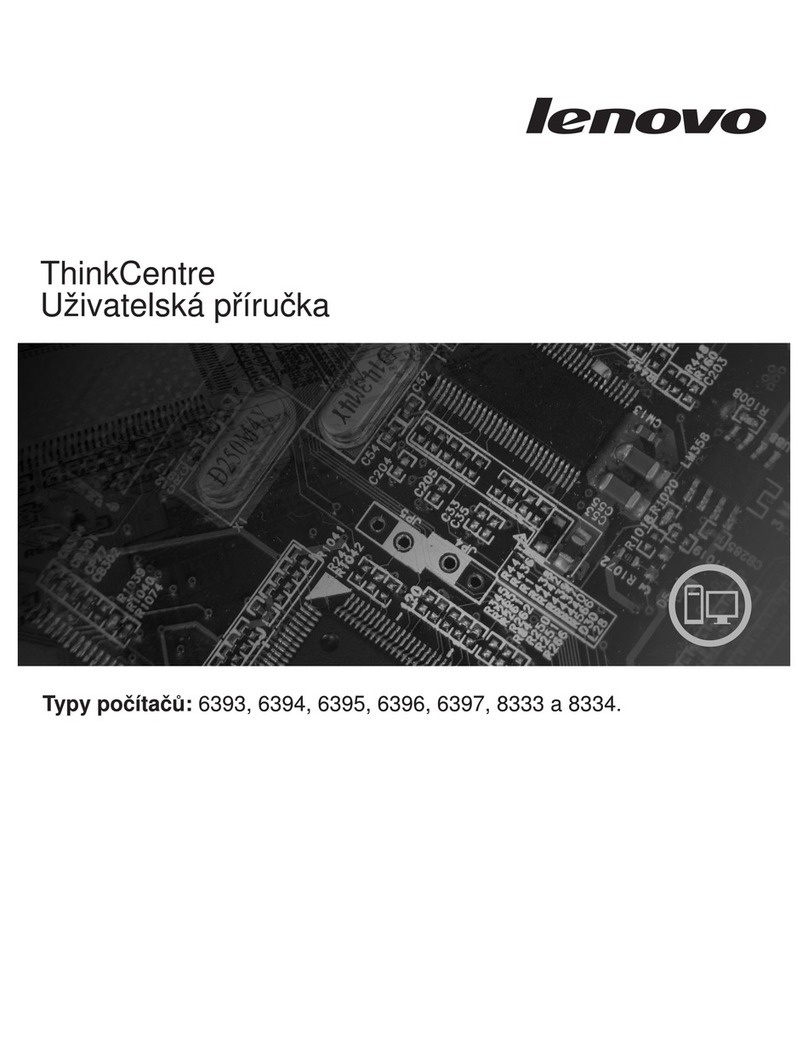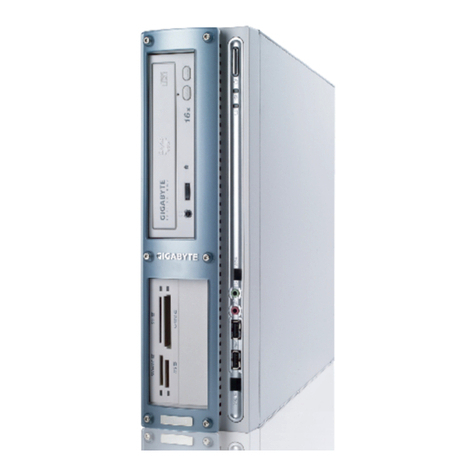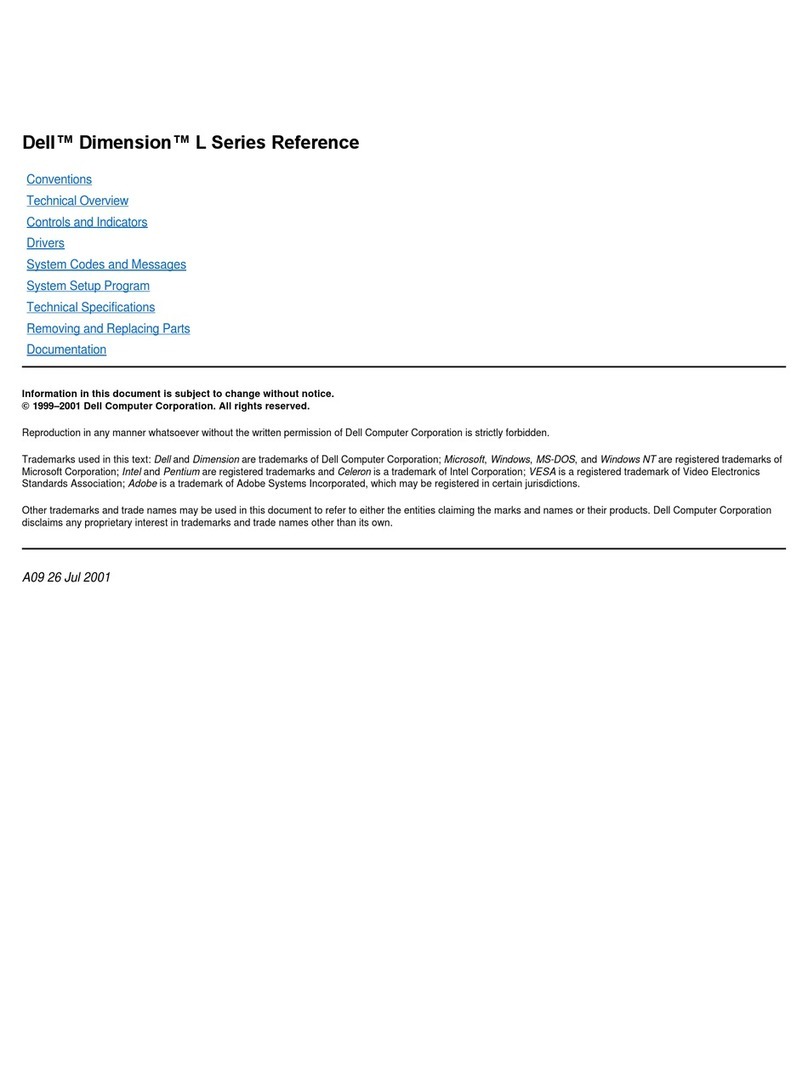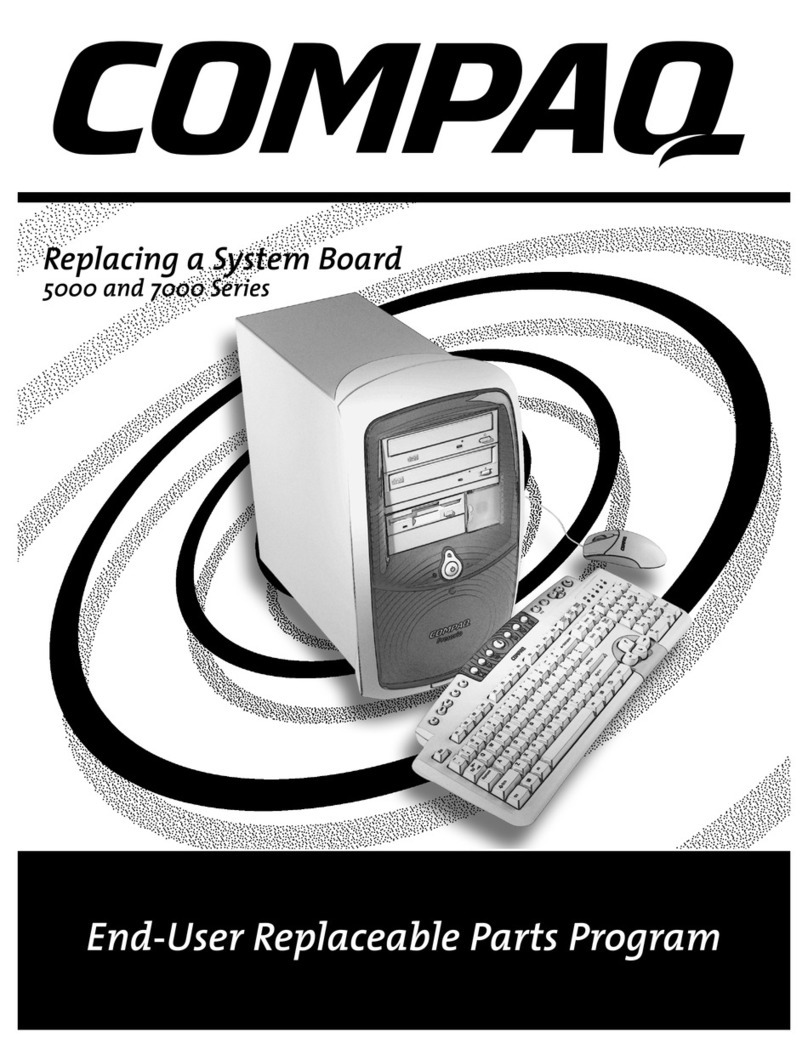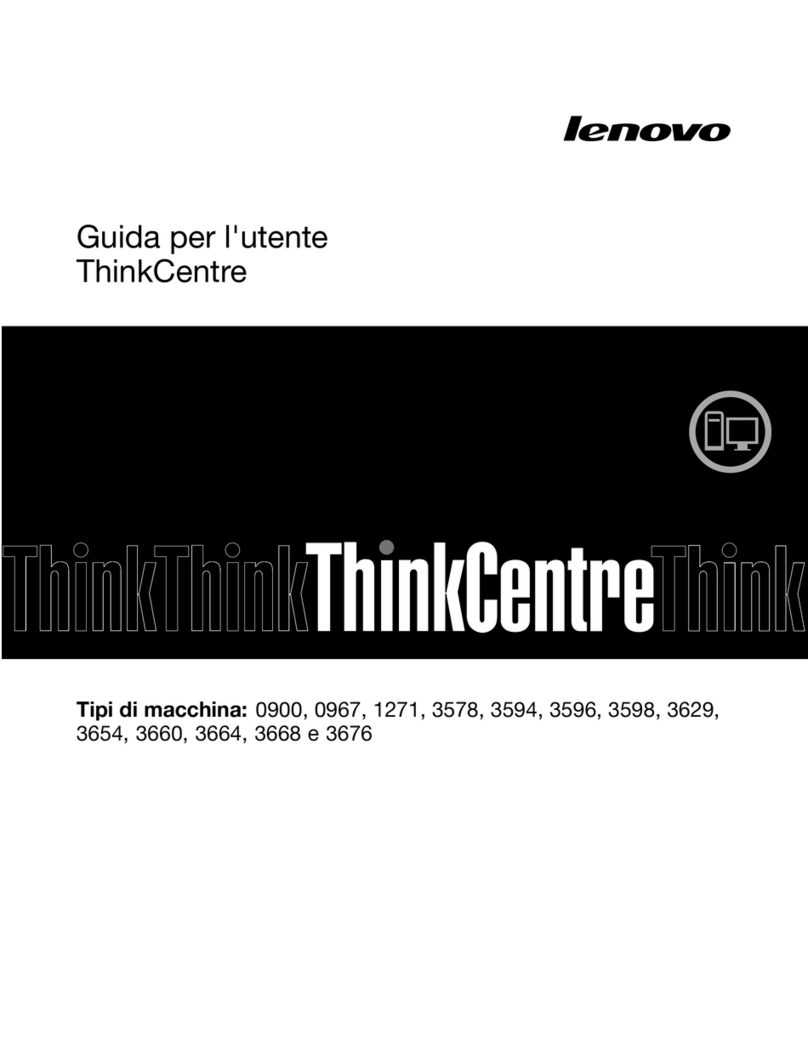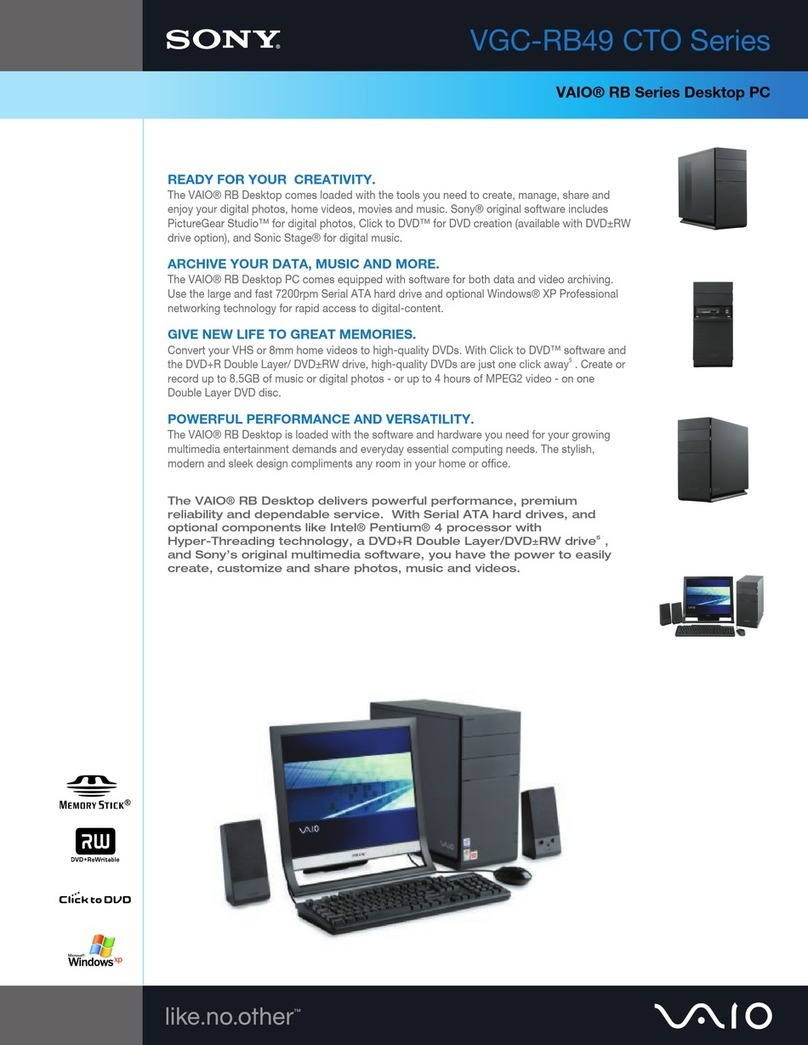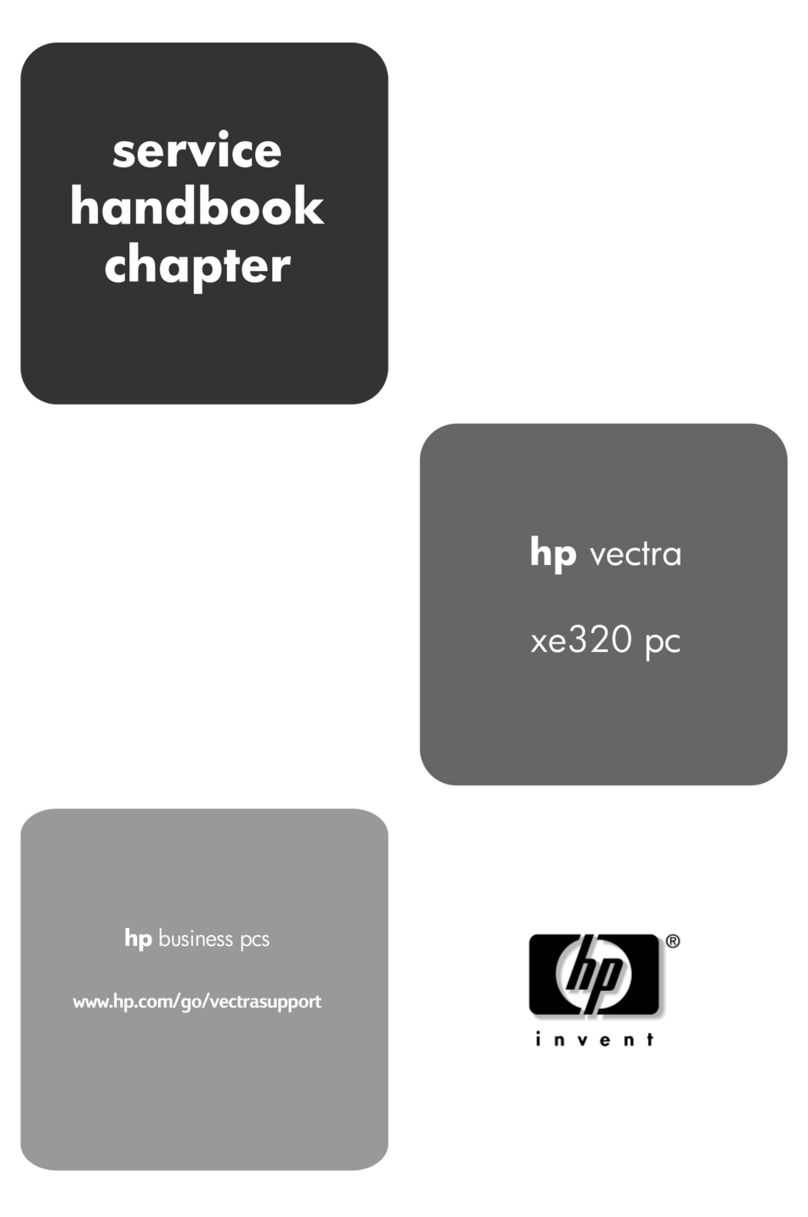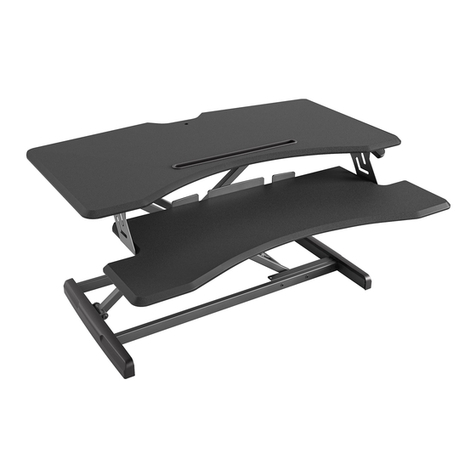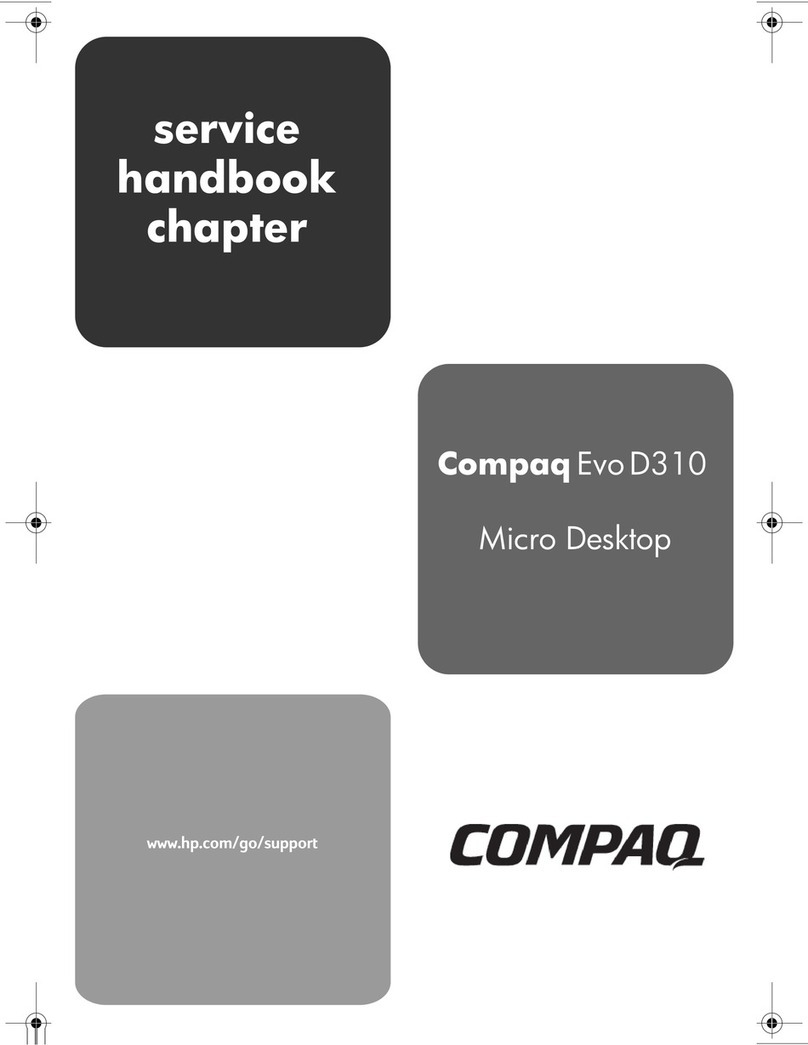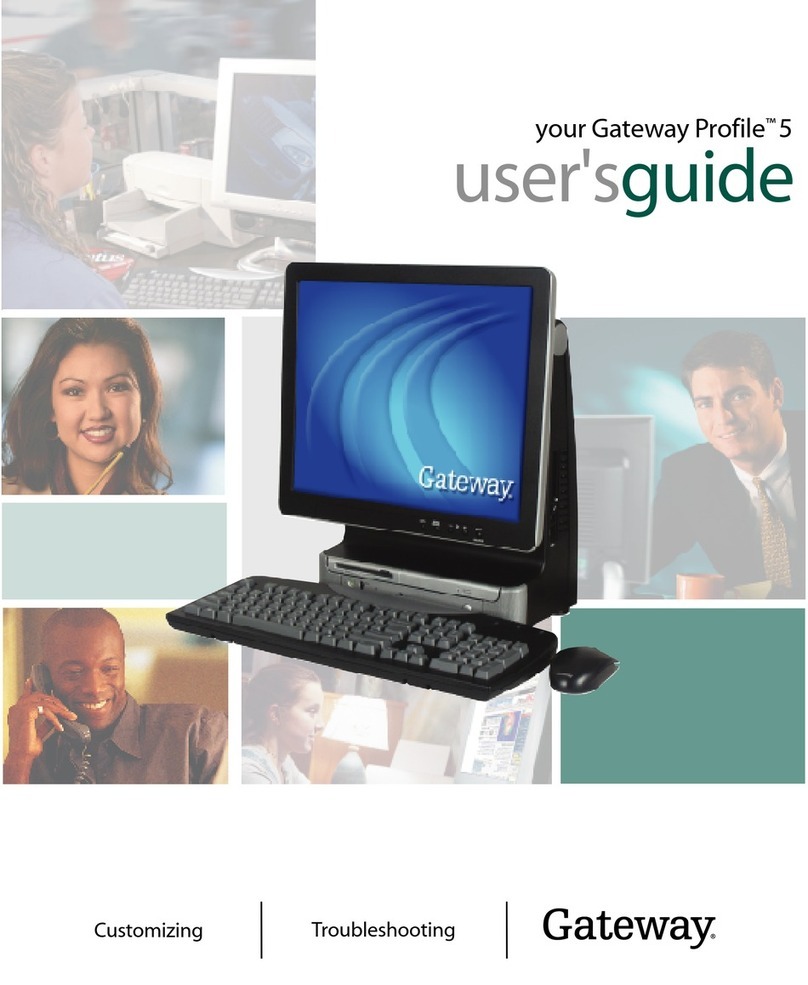GIMIX 6809 User manual

****
IMPORTANT
NOTICE
****
.f""""".
The
diagram
below
shows
the
proper
method
of
sett~ng
the
DIP-switches
used
on
GIMIX
boards
and
systems.
A
special
tool
for
setting
the
switches
has
been
included.
Use
of
this
tool
will
make
setting
of
the
switches
easier
and
prevent
possible
damage
to
the
switches
caused
by
the
use
of
pens,
pencils,
screwdrivers,
etc.
To
set
the
switches
use
the
tip
of
the
tool
to
depress
the
switch
rocker
at
the
end
nearest
the
desired
function,
as
marked
on
the
body
of
the
switch.
Be
sure
that
the
rocker
is
fUlly
depressed
and
has
snapped
into
place
in
the
desired
position.
In
the
following
example
sections
1
and
3
are
shown
OFF (OPEN)
and
section
2
is
ON
(CLOSED).
Depress
this
end
of
the
switch
rocker
to
set
a
switch
section
ON
(CLOSED).
o
N
32
o
F
F
The
RED
BAR
will
appear
here
when
a
switch
is
set
OFF
(OPEN).
Depress
this
end
of
the
switch
rocker
to
set
a
switch
section
OFF
(OPEN).
-
"
The
RED
BAR
will
appear
here
when
a
switch
is
set
ON
(CLOSED).
C2/3/82
GIMIX
Inc.

SYSCON
SYSTEM
CONFIGURATION
INFORMATION
05/10/83
Thank
you
for
purchasing
aGIMIX
6809
microcomputer
system.
This
section
of
the
manual
consists
of
a
collection
of
notes
on
the
installation,
setup,
and
use
of
GIMIX
6809
systems.
First-time
users
should
read
through
this
information
carefully
before
setting
up
the
system.
Users
who
are
already
familiar
with
GIMIX
systems
should
look
through
the
sheets
marked
"*",
in
the
list
below,
indicating
new
or
revised
information.
If,
after
reading
this
and
the
other
appropriate
sections
of
the
manual,
you
have
questions
concerning
the
setup
and
use
of
this
system,
please
call
us.
We
welcome
suggestions
for
additions
or
corrections
to
this
and
other
sections
of
the
manual.
If
you
have
any
suggestions,
please
submit
them
in
writing
to:
GIMIX
Inc.,
Attn.
Mike
Magnus,
1337
W.
37th.
Place,
Chicago
IL,
60609.
TABLE
OF
CONTENTS
SYSTEM
CONFIGURATION
NOTES
Name
Description
,
Date/Revision
SYSCON
UNPACK
SERCONN
PIACENT
SIOPCONN
SWITCON1
This
page
Unpacking
your
GIMIX
system
Serial
Interface
Connections
GIMIX
Parallel
to
"CENTRONICS"
printer
Intelligent
Serial
Interface
connections
Switch
configuration
for
OS-9
GMX
II
&
III
05/10/83
11/29/82
11/29/82
12/02/82
04/26/83
05/10/83
C
A
A
A
A
A*
01982
GIMIX
Inc.
-1-
Rev.
C

UNPACK
********** IMPORTANT -PLEASE
READ
**********
UNPACKING
YOUR
GIMIX
SYSTEM
11/29/82
To
protect
your
GIMIX
6809
system
during
shipping,
packing
material
has
been
placed
INSIDE
the
system.
YOU
MUST
REMOVE
THE
TOP
COVER
AND
ALL
OF
THE
PACKING MATERIAL BEFORE APPLYING
POWER
TO
THE
SYSTEM.
Remove
the
packing
carefully
and
be
sure
that
all
of
the
boards
are
fully
seated
on
the
motherboard
connectors.
Check
carefully
for
small
parts
that
may
have
been
packed
inside.
In
most
systems
the
AC
line
cord
and
keys
are
packed
inside
the
cabinet.
Small
parts,
such
as
cables,
may
also
be
packed
inside.
You
should
also
check
the
system
carefully
for
any
damage
that
may
have
occurred
during
shipping.
If
damage
is
apparent,
contact
GIMIX
and
the
carrier
immediately.
The
system
can
be
operated
with
the
cover
removed
to
facilitate
initial
setup
and
testing;
however,
we
recommend
that
the
cover
be
kept
in
place
as
much
as
possible
during
normal
operation
to
insure
proper
cooling.
(This
is
especially
important
with
hard
disk
systems.)
We
suggest
that
you
retain
the
original
box
and
packing
material,
in
case
it
is
ever
necessary
to
ship
the
system.
01982
GIMIX
Inc.
-1-
Rev.
A

SERCONN
**********
IMPORTANT
-PLEASE
READ
**********
@/29/8~
0,"1:)
-
CONFIGURATION INFORMATION
FOR
THE
GIMIX
TWO
PORT
SERIAL
I/O
BOARD
This
notice
outlines
the
recommended
procedure
for
connecting
serial
peripherals
(terminals,
printers,
etc.)
to
the
GIMIX
Two
Port
RS-232C
serial
interface
board.
Failure
to
follow
the
recommended
procedure
can
result
in
random
I/O
errors
caused
by
noise
pickup
on
unused
handshake
lines
(CTS
and/or
DCD).
The
errors
are
most
noticeable
on
interrupt
driven
systems
(OS-9
and
UniFLEX)
where
noise
can
cause
the
generation
of
interrupts
that
cannot
be
identified
by
the
operating
system.
As
shipped,
the
jumpers
on
the
Two
Port
serial
boards
are
normally
configured
as
shown
in
figure
"B"
of
the
"JUMPER CONFIGURATIONS"
drawing
included
with
the
board.
The
following
chart
shows
the
DB-25
connector
pinouts
for
this
configuration.
Signal
RX
TX
GND
RTS
DCD
CTS
Pin#
2
3
4
5
7
8
12
20
Direction
Computer
Peripheral
<----------<
>---------->
----->
[
----->
<---------->
>---------->
<----------<
<----------<
High-speed
terminals
normally
require
a
simple
three
wire
cable,
without
handshake,
connecting
pins
2,3,
and
7
of
the
I/O
board
to
the
corresponding
pins
on
the
terminal.
THE
UNUSED
HANDSHAKE
INPUTS
(DCD
and
CTS)
MUST
BE
PROPERLY TERMINATED
TO
PREVENT NOISE
PICKUP.
It-rs
especially--Important
to
terminate
these
inputs
if
a
25
conductor
cable
is
used.
There
are
two
recommended
methods
for
terminating
DCD
and
CTS.
The
first
is
to
REMOVE
(from
JA-1
and/or
JA-2)
the
jumpers
that
connect
DeD
and
CTS
to
the
I/O
cable.
These
jumpers
MUST
BE
REMOVED
even
if
the
corresponding
pins
on
the
I/O
connector
are
unconnected
since
even
the
length
of
cable
from
the
board
to
the
back-panel
connector
is
sufficient
to
pick
up
noise
from
the
system.
PUll-up
resistors
on
the
board
force
the
inputs
to
the
required
active
level
for
proper
operation
of
the
board.
This
method
should
be
sufficient
in
most
cases.
01982
GIMIX
Inc.
-1-
Rev.
A

The
second
method
connects
the
RTS
output
from
the
board
to
the
DCD
and
CTS
inputs.
Using
the
output
driver
(RTS)
to
hold
the
handshake
inputs
at
the
proper
level.
Caution:
This
method
will
only
work
if
the
software
initializes
the
RTS
output
of
the
ACIA
to
the
active
level.
Operating
systems
supplied
by
GIMIX
(FLEX,
OS-9,
and
UniFLEX)
initialize
the
ACIA
properly.
Software
from
other
sources,
that
directly
accesses
the
ACIA,
should
be
checked
for
proper
initialization.
There
are
two
ways
to
implement
this
method,
depending
on
the
type
of
cable
used
to
connect
the
board
and
the
peripheral.
If
a
discrete-wired
cable
is
used,
jumpers
can
be
installed
in
the
connector
at
the
computer
end
of
the
cable,
to
connect
RTS,
CTS,
and
DCD
together.
(In
the
case
of
the
jumper
configuration
shown
above,
pins
8,
12,
and
20
would
be
connected
together)
If
a
mass-terminated
or
ribbon
type
cable
is
used,
the
jumpers
for
RTS,
DCD,
and
CTS
can
be
removed
from
JA-1jJA-2
and
wire-wrap
techniques
used
to
connect
RTS,
DCD,
and
CTS
together
at
the
jumper
strips.
Printer
interfaces
normally
require
handshake
to
prevent
the
computer
from
outputting
data
faster
than
the
printer
can
accept
it.
Software
provided
by
GIMIX
uses
the
CTS
input
to
the
serial
board
for
printer
handshaking.
The
CTS
input
must
be
connected
to
an
output
from
the
printer
that
is
high
(positive
level)
when
the
printer
is
ready
to
accept
data
and
low
(negative
level)
when
it
is
not
ready.
The
DCD
input
is
not
used
in
this
application
and
should
be
terminated
as
described
in
the
preceding
section.
If
printer
handshake
is
not
required
(if,
for
example,
the
baud
rate
will
be
set
slow
enough
to
prevent
printer
over-run)
the
CTS
input
should
also
be
terminated
as
described
above.
Note:
Some
serial
printers
require
that
their
handshake
inputs
(DSR/DCD)
be
placed
in
an
active
state
before
they
will
accept
data.
This
can
usually
be
accomplished
by
connecting
an
unused
output
from
the
printer
(DTR)
to
its
handshake
inputs,
at
the
printer
end
of
the
cable.
See
the
example
diagrams
below
and
the
printer
documentation.
TI-810,
etc.
EPSON
MX
series,
etc.
3
20
7
PRINTER
---<
--->
CTS
GND
>---
TX
DATA
--->
<---
<---
3
7
20
COMPUTER
3
7
11
6
8
20
PRINTER
---<
--->
--DSR-->
[
--DCD-->
[
--DTR--<
GND
CTS
>---
TX
DATA
--->
<---
<---
+
+
+
+
+
+
+
+
+
+
+
+
+
+
NOTE:
The
above
diagrams
assume
that
the
2-port
serial
board
is
jumpered
as
shown
in
figure
liB"
of
the
hardware
documentation.
3
7
20
COMPUTER
01982
GIMIX
Inc.
-2-
Rev.
A

PIACENT
GIMIX
PIA-30
to
CENTRONICS TYPE PRINTER INTERFACE
12/02/82
GIMIX
PIA
BOARD
DB-25
CONNECTOR
PIN
SIGNAL
"CENTRONICS"
36-PIN
CONNECTOR
PIN
1
>--------------------
DATA
0
------------------->
2
2
>--------------------
DATA
1
------------------->
3
3
>--------------------
DATA
2
------------------->
4
4
>--------------------
DATA
3
------------------->
5
5
>--------------------
DATA
4
------------------->
6
6
>--------------------
DATA
5
------------------->
7
7
>--------------------
DATA
6
------------------->
8
8
>--------------------
DATA
7
------------------->
9
9<------------------
ACKNOWLEDGE
----------------<
10
10
>--------------------
STROBE -------------------> 1
14
19
THROUGH
<-----------------
SIGNAL
GROUND
--------------->
THROUGH
25
28
NOTE: When
using
ribbon
cable,
alternate
signal
and
ground
lines
for
better
isolation.
When
using
standard
multi-
conductor
cable,
twisted-pairs
are
preferred,
with
each
signal
line
paired
with
its
associated
ground.
Cable
length
should
be
kept
to
a
minimum,
with
10
feet
being
the
maximum
recommended
length.
Shielded
cable
may
be
required
if
radio
interference
is
a
problem.
01982
GIMIX
Inc.
-1-
Rev.
A

ISERCoN
**********
IMPORTANT
-PLEASE
CONNECTION
INFORMATION
FOR
THE
GMX~
INTELLIGENT SERIAL INTERFACE
This
notice
outlines
the
recommended
procedure
for
connecting
serial
peripherals
(terminals,
printers,
etc.)
to
the
GMX~
Intelligent
Serial
Interface
board.
Failure
to
follow
the
recommended
procedure
can
result
in
random
I/O
errors
caused
by
noise
pickup
on
unused
handshake
lines
(CTS,
DSR,
and/or
DCD). The
errors
are
most
noticeable
on
interrupt
driven
systems
(05-9
and
UniFLEX)
where
noise
can
cause
the
generation
of
interrupts
that
cannot
be
identified
by
the
operating
system.
on
the
boards
are
normally
configured
as
<--------------------<
>-------------------->
<--------------------<
<--------------------<
>-------------------->
<--------------------<
>-------------------->
>-------------------->
As
shipped,
the
jumpers
shown
below.
Signal
Pin
/I
RX
2
TX
3
CTS-
4
DTR
5
RTS
6
GND
7
DCD- 8
PU*
11
DSR-
20
Computer
Direction
Peripheral
*
PU
is
an
active
(high)
level
output
that
can
be
used
to
hold
unused
inputs
at
the
active
level.
High-speed
terminals
normally
require
a
simple
three
wire
cable,
without
handshake,
connecting
pins
2,3,
and
7
of
the
I/O
board
to
the
corresponding
pins
on
the
terminal.
THE
UNUSED
HANDSHAKE
INPUTS (DCD,
DSR,
and
CTS)
MUST
BE
PROPERLY
TERMINAT~TO
PREVENT
NOISE PICKUP.
---It
~
especially--rmportant
to
terminate
these
inputs
if
a25
conductor
cable
is
used.
There
are
two
recommended
methods
for
terminating
unused
handshake
inputs.
The
first
is
to
REMOVE
(from
JA-5,6,and/or
JA-7)
the
jumpers
that
connect
the
unused
lines
to
the
I/O
cable.
These
jumpers
MUST
BE
REMOVED
even
if
the
corresponding
pins
on
the
I/O
connector
are
unconnected,
since
even
the
length
of
cable
from
the
board
to
the
back-panel
connector
is
sufficient
to
pick
up
noise
from
the
system.
Pull-up
resistors
on
the
board
force
the
inputs
to
the
required
active
level
for
proper
operation
of
the
board.
This
method
should
be
sufficient
in
most
cases.
01983
GIMIX
Inc.
-1-
Re
v.
A

The
second
method
connects
the
PU
output
from
the
board
to
the
unused
inputs.
Using
the
output
driver
(PU)
to
hold
the
handshake
inputs
at
the
proper
level.
There
are
two
ways
to
implement
this
method,
depending
on
the
type
of
cable
used
to
connect
the
board
and
the
peripheral.
If
a
discrete-wired
cable
is
used,
jumpers
can
be
installed
in
the
connector
at
the
computer
end
of
the
cable,
to
connect
PU, CT5,
D5R,
and
DCD
together.
(In
the
case
of
the
jumper
configuration
shown
above,
pins
4,
8,
11,
and
20
would
be
connected
together)
If
a
mass-terminated
or
ribbon
type
cable
is
used,
the
jumpers
for
PU, D5R,
DCD,
and
CT5
can
be
removed
from
the
jumper
areas
and
wire-wrap
techniques
used
to
connect
the
appropriate
pins
together
at
the
jumper
strips.
Computer
Terminal
2
3
7
<------
RX
Data
------<
>------
TX
Data
------>
<-----
5ig.
Gnd.
----->
2
3
7
4
<-----
I
8
<-----
I
11
>-----
I
20
<-----
5
>-----
N.C.
6
>-----
N.C.
PU
(pin
11)
used
to
hold
unused
inputs
at
the
active
(high)
level
for
better
noise
immunity.
Some
terminals
may
require
handshake
at
higher
baud
rates
(usually
9600
and
above;
consult
the
terminal
manufacturer's
documentation).
This
is
usually
available
in
one
of
two
forms,
hardware
or
software
(X-ON/X-OFF).
If
hardware
handshake
is
required
the
appropriate
output
from
the
terminal
should
be
connected
to
one
of
the
inputs
(D5R
or
DCD)
as
described
in
the
following
section
on
printer
connections.
If
X-ON/X-OFF
is
required
the
standard
configuration
shown
above
can
be
used.
Caution:
Before
using
X-ON/X-OFF,
check
the
software
documentation
to
determine
if
it
is
supported
and
if
special
software
configuration
is
necessary.
GIMIX/05-9
software
supports
X-ON/X-OFF
but
it
must
be
enabled
by
making
the
appropriate
changes
to
the
Device
Descriptor(s).
01983
GIMIX
Inc.
-2-
Rev.
A

Printers
normally
require
handshake
to
prevent
the
computer
from
outputting
data
faster
than
the
printer
can
accept
it.
Software
provided
by
GIMIX
uses
either
the
DCD
or
DSR
inputs
for
printer
handshaking.
One
of
these
inputs
must
be
connected
to
an
output
from
the
printer
that
is
high
(positive
level)
when
the
printer
is
ready
to
accept
data
and
low
(negative
level)
when
it
is
not
ready.
The
CTS
input
should
not
used
in
this
application
and
should
be
terminated,
along
with
the
other
unused
input
(either
DCD
or
DSR),
as
described
in
the
preceding
section.
If
printer
handshake
is
not
required
(if,
for
example,
the
baud
rate
will
be
set
slow
enough
to
prevent
printer
over-run)
all
three
inputs
should
be
terminated
as
described
above.
Note:
Some
serial
printers
require
that
their
handshake
inputs
(DSR/DCD)
be
placed
in
an
active
state
before
they
will
accept
data.
This
can
usually
be
accomplished
by
connecting
an
unused
output
from
the
printer
(DTR)
to
its
handshake
inputs,
at
the
printer
end
of
the
cable.
See
the
example
diagrams
below
and
the
printer
documentation.
TI-810,
etc.
EPSON
MX
series,
etc.
COMPUTER
PRINTER +
COMPUTER
PRINTER
+
3
>---
TX
DATA
--->
3+3
>---
TX
DATA
--->
3
+
*20
<---
DSR
---<
11 +*20
<---
DSR
---<
20
+
7
<---
GND
--->
7+7
<---
GND
--->
7
+
--DSR-->
6+
I+
--DCD-->
8+
I+
--DTR--<
20 +
+
*
Pin
8(DCD) may
also
be
used
as
the
handshake
input.
Some
printers
may
use
software
(X-ON/X-OFF)
handshake
for
start/stop
control.
In
this
case
connection
must
also
be
made
between
pin
2
of
the
computer
and
pin
2
of
the
printer
to
provide
the
reverse
channel
for
handshaking.
See
the
software
documentation
for
information
on
the
availability
of
X-ON/X-OFF.
01983
GIMIX
Inc.
-3-
Rev.
A

GIIISOFT
Using
software
from
other
vendors
with
OS-9
GMX~
III
~J)I(
06/08/83
-
Most
existing
software
designed
for
use
with
OS-9~
Level
II
will
function
properly
on
GMX~
III
systems,
without
modification.
However,
it
may
be
necessary
to
obtain
updated
versions
of
some
programs.
The
GMX~
III
system
has
been
instrumental
in
identifying
and
locating
many
bugs
in
existing
software.
To
date
the
software
vendors
have
been
very
cooperative,
and
in
most
cases
these
bugs
have
been
or
are
being
corrected.
If
you
encounter
problems,
especially
trap
errors
(#197,
#198,
or
#199),
contact
the
software
vendor
for
information
on
current
versions
for
use
with
GMX
III.
Single
character
I/O
and
GIMIX
intelligent
I/O
boards.
GIMIX
intelligent
I/O
boards
and
the
"lOP"
drivers
fully
support
single
character
I/O,
using
the
same
conventions
as
the
standard
I/O
drivers.
Existing
software
that
uses
single
character
I/O
will
work
with
the
intelligent
I/O
boa~
However,
software
that
makes-exfensive
use-or-5ingle
character-output
(e.g.
certain
text
editor/processors)
will
not
perform
as
well
as
the
same
software
using
line
oriented
character
output.
Early
versions
of
both
Dynastar
and
Stylograph
used
single
character
output;
however,
versions
that
use
line
oriented
output
are
now
available.
Note:
systems
that
do
not
use
intelligent
I/O
boards
can
also
benefit
from
the
use
of
line
rather
that
character
oriented
output.
c19 8 3 G
It~
I X
Inc.
-i-
Re
v.
A
Table of contents
